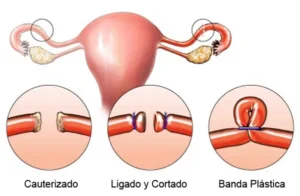Question: Is receiving Communion in the hand the same as receiving it on the tongue? Why is receiving it in the hand being encouraged?
Answer:
To begin, some norms. The first document from the Holy See that speaks of Communion in the hand is the Instruction Memoriale Domini, from the Sacred Congregation for Divine Worship, May 29, 1969; later, the Instruction Immensae caritatis, January 29, 1973; the Ritual for Holy Communion and Worship of the Eucharist Outside of Mass; and a letter dated April 3, 1985, published by the Congregation for Divine Worship, which expresses the conditions for this practice.
For its part, the Institutio Generalis Missalis Romani, incorporating the aforementioned norms, stipulates the following:
«161. Si Communio sub specie tantum panis fit, sacerdos hostiam parum elevatam unicuique ostendit dicens: Corpus Christi. Communicandus respondet: Amen, et Sacramentum recipit, ore vel, ubi concessum sit, manu, pro libitu suo.Communicandus statim ac sacram hostiam recipit, eam ex integro consumit». That is to say, in principle, Communion is received on the tongue, but, where it is granted (by the Episcopal Conference), the faithful may, by choice, receive the host in the hand. On the other hand, when Communion is received “by intinction” (that is, under both species, by dipping the host into the Chalice), obviously, it can only be received in the mouth (Cf. IGMR, 287).
The Instruction Redemptionis sacramentum, from the Congregation for Divine Worship and the Discipline of the Sacraments (March 25, 2004), states the following:
[92.] Although each faithful always has the right to receive Holy Communion on the tongue, if the communicant wishes to receive the Sacrament in the hand, in the places where the Conference of Bishops has allowed it, with the confirmation of the Apostolic See, the Sacred Host must be administered to him. However, special care should be taken to ensure that the communicant consumes the host immediately, in the presence of the minister, and that no one walks away holding the Eucharistic species in his hand. If there is a risk of profanation, Communion should not be distributed to the faithful in the hand.
[93.] The Communion paten for the faithful should be retained, to avoid the danger of the Sacred Host or any fragment falling.
[94.] It is not permitted for the faithful to take the consecrated host or the sacred chalice “by themselves, and still less to pass them from hand to hand.” In this matter, furthermore, the abuse must be suppressed whereby spouses, at a Nuptial Mass, administer Holy Communion to each other.
From this we can deduce that receiving Communion in the hand is an exception there “where the Conference of Bishops has allowed it, with the confirmation of the Apostolic See.”
For various reasons, we believe that it is more appropriate to receive it on the tongue. First, because the risk of profanation is much lower, which is why it is said that “if there is a danger of profanation, Communion should not be distributed to the faithful in the hand.” Secondly, to prevent particles from remaining on the hand, which is sought to be avoided as much as possible when given on the tongue, by the use of the paten. Thirdly, out of reverence for the Sacrament. The priest, although unworthy, has his hands consecrated with chrism and is the ordinary minister of the Eucharist, to whom it belongs by office to “give what is sacred.”
It is true that in ancient times Communion was received in the hand, which had to be presented as a throne receiving Christ, and Communion was received with great reverence: «When you approach (to receive the Body of the Lord), do not do so with your palms open and your fingers separated, but making your left hand a throne for your right hand, which is to receive the King, and then with the palm of your hand form a receptacle (cavity), gather the body of the Lord and say “Amen.” Then, carefully sanctify your eyes by touching the sacred Body and partake of it, but be careful that nothing falls from you; for whatever falls, you will lose as if from your own members. Tell me: if someone had given you gold dust, would you not guard it with all care and be cautious lest any of it fall or be lost? And should you not guard with much greater care lest even a crumb fall from you of what is more valuable than gold and precious pearls?» (ST. CYRIL OF JERUSALEM, Mystagogical Catecheses, V, 21ff).
Even on Sundays, the Blessed Sacrament was taken to commune during the week, considering that there was no Mass every day (Cf. J. A. JUNGMANN, The Sacrifice of the Mass, BAC, Madrid, 1961, vol II, 1066-1067), but just because a practice is ancient does not mean it should be considered better and more suitable for our times.
Bishop Ranjith, secretary of the Congregation for Divine Worship, recently stated that «the Holy Father often speaks of the need to safeguard the sense of “otherness” in every expression of the liturgy. The gesture of taking the Sacred Host and, instead of receiving it, placing it in our mouths ourselves, reduces the profound meaning of Communion» (La Repubblica, July 31, 2008). The Eucharist is a gift, and this is better manifested when it is received directly into the mouth. This shows the delicacy with which God (through the priest, like a father feeding his children) feeds us with the very Bread of Angels.
Fr. Jon M. de Arza, IVE
Original Post: Here












